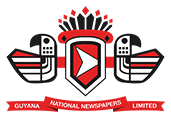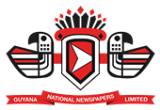After all the rumours, Microsoft finally unveils tablet
A NEW device unveiled by Microsoft is a sign of the new tactics the software giant has been forced to embrace as it tries to make up lost ground in the mobile market. Microsoft says the smallest Surface tablet is 9.3 millimetres thick and weighs 1.5 pounds, which is similar to Apple’s iPad, at 9.4 millimetres thick and 1.44 pounds. The Surface has a 10.6-inch screen, compared with the iPad’s 9.7-inch screen. Quite impressive!
The Surface has a built-in kickstand and magnetic cover, which also acts as a touch keyboard. However, we don’t know whether the device would connect to cellular data networks or would be Wi-Fi only; we’ll just have to wait and see.
This new device will act as a vehicle to exploit its forthcoming Windows 8 operating system, and a variant called Windows RT that relies on different kinds of computer chips. The software is the first from Microsoft designed with tablet computers in mind, offering an interface called Metro that is designed to be controlled by a user touching a display.
Microsoft executives repeatedly use the words “no compromises” to describe the tablet computers they envision running Windows 8 and Windows RT— which means that users will be able to use work-oriented tools like Microsoft Word and Excel programs, and not just use the device for watching movies and surfing the Web.
Microsoft also emphasized the use of the Surface with a keyboard, a convertible usage model that the company has helped champion and Apple has publicly discounted.
Microsoft’s involvement with tablet-style computing goes back more than three decades, supplying software to companies for products designed to be activated with a pen-style device. But those machines failed to gain wide acceptance. The Surface, and the new versions of Windows, is an attempt to emulate the touch-based interaction that Apple popularized with the iPhone and iPad.
The computer makers’ business is dependent on Microsoft, so they may not express annoyance publicly at Microsoft’s trading on the hardware makers’ turf. But at least some hardware executives are fuming privately at Microsoft’s decision.
Its move to make its own tablet “comes with consequences which are complicating choices for consumers and complicating relations with third-party manufacturers.”
Presently, the company has shown two versions of the device. The one running Windows 8 will run chips from Intel Corp., which supplies chips used in most PCs. The version running Windows RT will be powered by chips from Nvidia Corp. based on designs from ARM Holdings PLC, a variety of chips widely used in cell phones and tablets.
Some additional features from the Tablet…
Windows 8 tablets will deliver over nine hours of battery, 4G connectivity, NFC technology, etc.
Windows 8 tablets will have a marvellous new interface that looks rather like Windows Phone 7, called Metro.
Windows 8 removes the now-familiar Aero Glass effect seen in Windows 7 and Windows Vista, and replaces it with a much plainer appearance on the desktop.
Some Windows 8 tablets will be designed for business. The company believes there is a huge market for business people who want to enjoy a slate for reading newspapers and magazines and then work on Microsoft Word, Excel or PowerPoint while doing work.
Microsoft didn’t identify contractors who will manufacture the hardware, or provide much clarity on timing — except to say that the first Surface models will arrive when Windows 8 is generally available, which is expected to be in the second half of the year.
Do you reckon we’ll see a decent range of Windows 8 tablets? Or, will they fail to hit the mark?
TechTalk…
SHARE THIS ARTICLE :
Facebook
Twitter
WhatsApp



.jpg)









